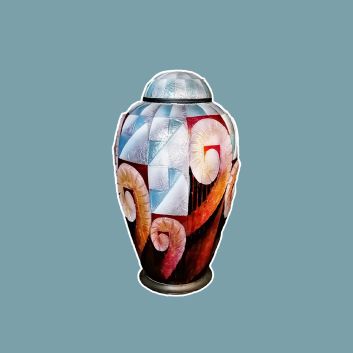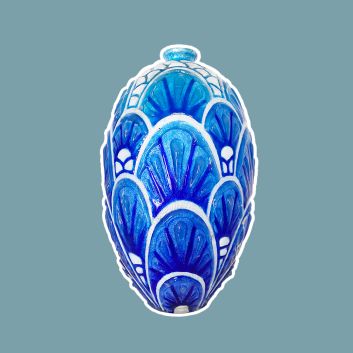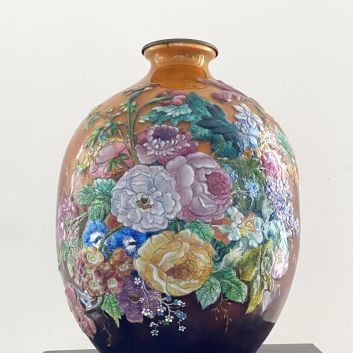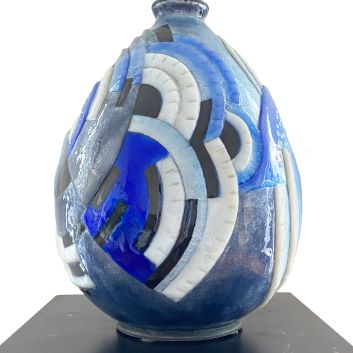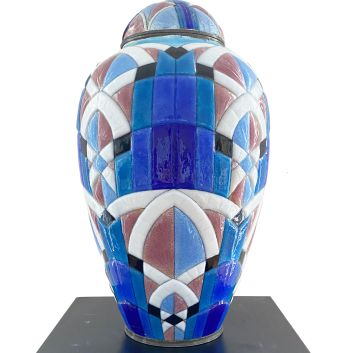An emblematic name of Art Deco: Camille Fauré
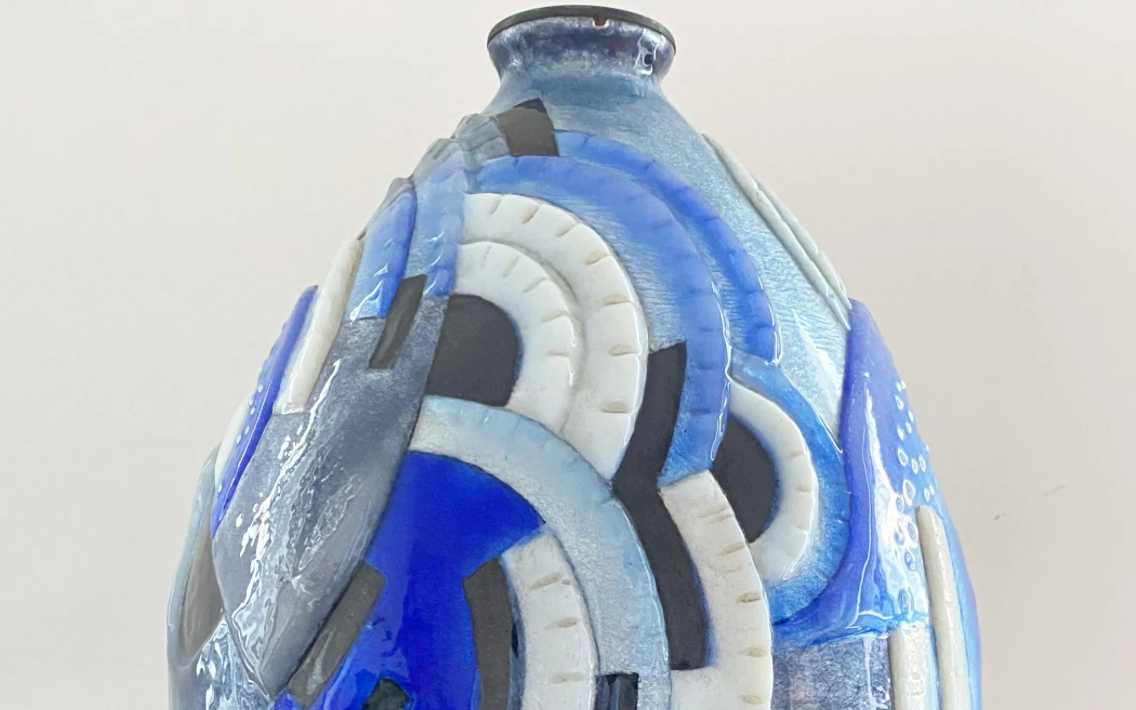
If you own an object by or after Camille Fauré, and would like to know its value, our state-approved experts and auctioneers can offer you their expert appraisal services.
Our specialists will carry out a free appraisal of your work, and provide you with a precise estimate of its current market value.
Then, if you want to sell your work, we'll point you in the right direction to get the best possible price for it.
Rating and value of works by Camille Fauré
Camille Fauré is a French artist well known to collectors of Limoges ceramics and enamels.
If you own one of his works, it may be worth more than you think. On the art market, Fauré's works can fetch very high prices under the auctioneer's hammer.
His ceramic works are particularly prized by French and European buyers, and the price at which they sell on the art market ranges from €70 to €2,200, a fairly substantial range, but one that says a lot about the value that can be attributed to Fauré's works.
In 2012, two art deco enamel vases sold for €20,900, whereas their estimate was between €2,000 and €3,000.
Order of value from a simple work to the most prestigious
Technique used | Results |
|---|---|
Ceramic painting | From €40 to €6,300 |
Luminaire | From €200 to €14,800 |
Vase | From €10 to €20,900 |
Response in less than 24h
The golden age of Limoges enamel: Camille Fauré
This great and beautiful tradition of Limoges enamel, however, lost some of its quality in the 17th and 18th centuries, only to return with the "revival" of the Middle Ages and the Renaissance in the 19th century.
French techniques and heritage are being revived, and enamel is making a comeback, on silverware and furniture.
However, it was at the turn of the 20th century that enamel experienced its second golden age in Limoges, notably with the productions of Camille Fauré.
An entrepreneur in a variety of fields, Camille Fauré had the brilliant idea of reviving the production of Limoges enamels. Surrounded by the city's finest craftsmen, he set up his own enamels company in the 1920s.
From his workshop comes a production at the cutting edge of the fashion of his time - Art Deco - enameled vases with stylized, geometric motifs and vibrant colors, inspired by cubism and the Parisian avant-gardes.
The whole of Paris bought these works - luxurious and trendy - until the stock market crash of 1929. This event deprived Camille Fauré of some of his bourgeois clientele and forced him to adapt his production to the more modest purses by offering less qualitative, mass-produced works.

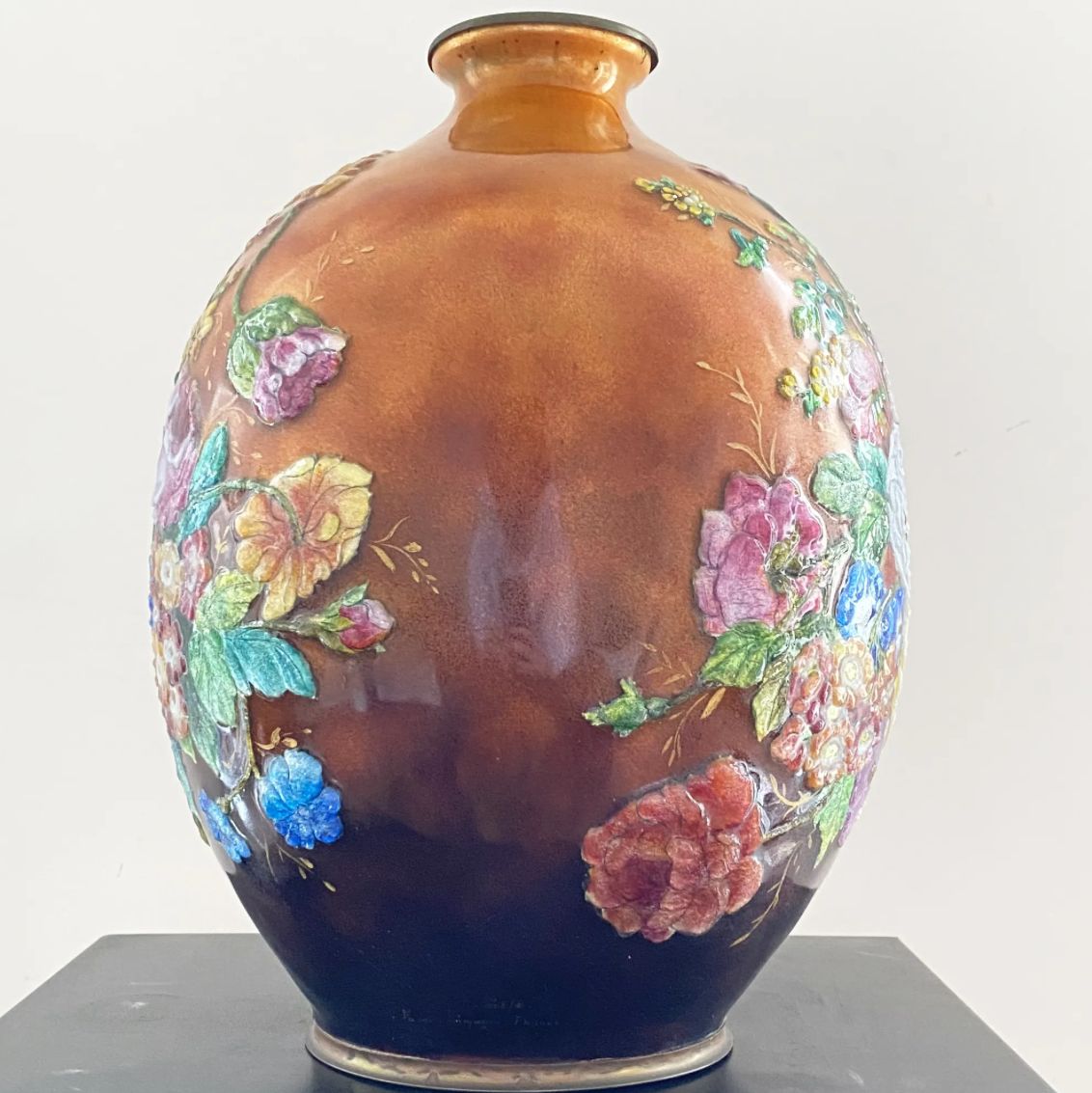
The specificities of enamel vases
The specificity of this vase lies in its technique : enamel on a metal plate - in this case, copper. An ancestral technique already used in Ancient Greece, enamel is a substance made from ground and heated glass, which is then tinted with metal oxides.
It's worth noting that some regions make this a speciality: the Russians, for example, set tables richly enlivened by the presence of multicoloured enamels with floral decorations on serving pieces and other silverware.
Asian products, particularly those from the Middle Kingdom - China, that is - reached exceptional levels of quality as early as the Middle Ages.
Nevertheless, as usual, our country doesn't lag behind when it comes to the arts and techniques, and this is also the case in the little-known field of art enamels.
The fashion of enamels
While enamels became fashionable on jewelry and ceremonial pieces during the Carolingian period, it was only in the 12th century that France - and specifically the town of Limoges - established itself as a nerve center for this art.
Production was initially devoted to liturgical objects: shrines, reliquaries and other processional crosses were made in gold or silver, embellished with polychrome enamels depicting episodes from the life of Christ or the Saints.
This production - almost exclusively for ecclesiastics - diversified over the centuries, reaching a golden age during the Renaissance. The technique evolved and gained in quality, and the painted enamels became masterpieces of meticulous detail.
From then on, production was secular: rich and powerful sovereigns bought Limoges pieces to add to their art collections. Gone were the days of bondieuseries, replaced by pleasure and pageantry!
Princes commissioned their portraits from Limousin enamellers (for an example, see Portrait du connétable de Montmorency, in the Louvre), and bought dishes and ceremonial pieces in a variety of decorative registers, from Greek and Roman mythology to the Old Testament, from the greatest dynasties of Limousin artists.
Estimate of a vase signed Camille Fauré
Camille Fauré's most sought-after production period was between 1920 and 1930.
Values range from €3,000 to €20,000 for vases from this period.
Lighting fixtures are also highly sought-after, selling for between €300 and €5,000.
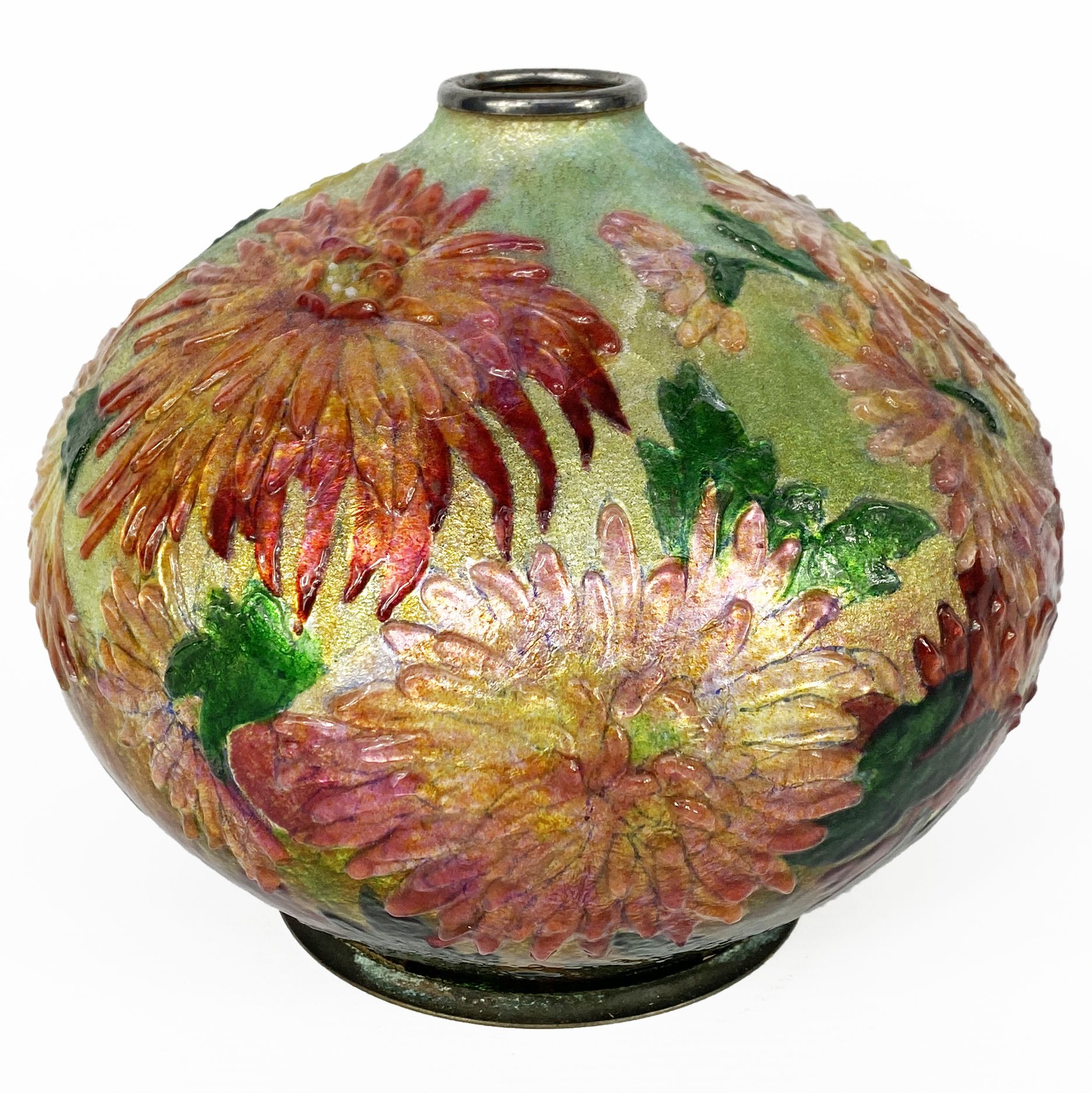
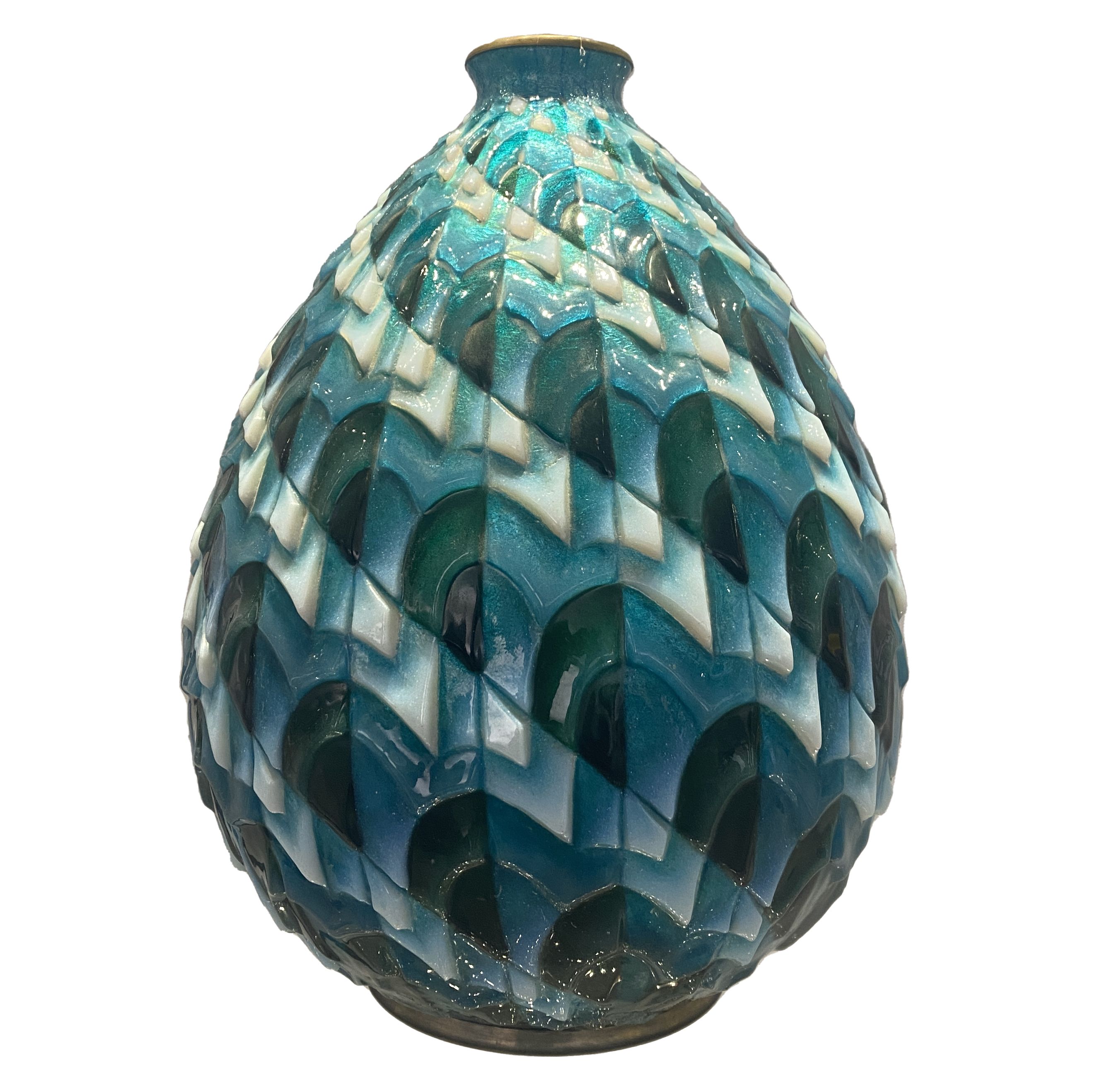
Camille Fauré's success story
The Limoges enameller's commitment to pushing back the boundaries of traditional skills is well known, transforming cloisonné enamel into an artistic language in its own right.
"For me, it was a question of expressing not just an aesthetic, but a palpable emotion", he confided to his collaborators, underlining a quest where technique and sensitivity meet.
This decisive turning point, which began in the 1920s, coincided with a period when Art Deco was imposing its taste for luxury and modernity, and demand for exceptional objects was growing in elite circles.
Spurred on by prestigious commissions - including some from world's fairs - and international recognition, the Fauré workshops transcended their status as local craftsmen to become an essential reference in haute decoration.
This meteoric rise is the result of a skilful strategy: combining technical innovation with aesthetic refinement.
Sculpted reliefs and luminous, sometimes iridescent palettes give each piece a unique character, while the captivating motifs - wisteria, exotic birds, abstract arabesques - reflect both an attachment to nature and a resolutely modern vision.
This duality, between tradition rooted in Limoges techniques and openness to contemporary influences, sets Fauré apart from his peers.
His creations, both utilitarian objects and works of art, resonate with discerning collectors and lovers of rare objects.
Camille Fauré's reputation also rests on his ability to surround himself with a talented team capable of turning his visions into reality.
Collaborations within the studio become the crucible for a fertile dialogue between scientific innovation - new textures, ever brighter glazes - and meticulous attention to detail.
What we might call the blossoming of a craftsman-artist, at the heart of a century eager for wonder and renewal, where technical excellence meets visual poetry to transform everyday objects into veritable icons of their time.
Focus on Glycines, Camille Fauré
Camille Fauré's Glycines vase seems to question the material in terms of movement and light. We know of the artist's attachment to the sensuality of enamel - splinters and reliefs - beyond its simple decorative function.
"For me, it was a matter of making the material vibrate and come alive," he would later say. The popularity of wisteria in the 1920s was the result of a new approach to ornament, in which blossoms and chromatic nuances dissolved the boundary between naturalism and abstraction.
The rigor of the outline is replaced by a continuity of flowing lines, each petal seeming to blossom under the effect of an invisible breath.
This fluidity of surface is reminiscent of the work of René Lalique, for whom transparent glass replaces enamel in a similar quest to capture light.
But where Lalique favors delicate shading, Fauré opts for a chromatic density that gives his works an almost sculptural presence.
Compared with the geometric works of Jean Dunand, whose lacquered metals celebrate order and structure, the "Glycines" vase seems to vibrate with controlled disorder, where nature and abstraction merge into a new harmony.
As a contemporary critic wrote, "Fauré achieves an intensity where each detail, far from being isolated, is part of an organic dynamic".
This unity of surface, where the plant becomes pure movement, is part of a process that could be called the reinvention of the floral motif, halfway between art and alchemy.
Recognizing Camille Fauré's signature
Not all objects produced by Camille Fauté are signed, or may be signed differently depending on the period. What's more, there are many copies, which is why it's important to appraise your work.
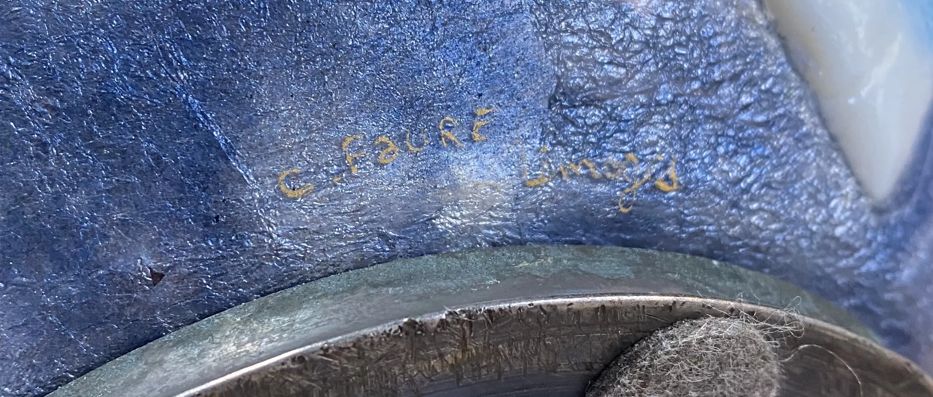
Knowing the value of a work
If you happen to own a painting by Camille Fauré or one based on the artist, don't hesitate to ask for a free estimate using the form on our website.
A member of our team of experts and certified auctioneers will contact you promptly to provide you with an estimate of the market value of your work, as well as any relevant information about it.
If you're thinking of selling your work of art, our specialists will also be on hand to help you find alternatives for selling it at the best possible price, taking market trends into account.
Response in less than 24h
Related topics

Rating and value of works, drawings, paintings by Marie Vass...
Marie Vassilief is a 20th-century Cubist artist who produced drawings, collages and oils on canvas that are valued at auction.
Read more >

Rating and value of paintings by Martiros...
Martiros Saryan is an Armenian painter influenced by Fauvism and Symbolism, who has produced paintings that are highly regarded and valued.
Read more >

Rating and value of paintings by Albert Gl...
Albert Gleizes was a twentieth-century Cubist artist and theorist who produced numerous works of great value.
Read more >
Secure site, anonymity preserved
State-approved auctioneer and expert
Free, certified estimates
